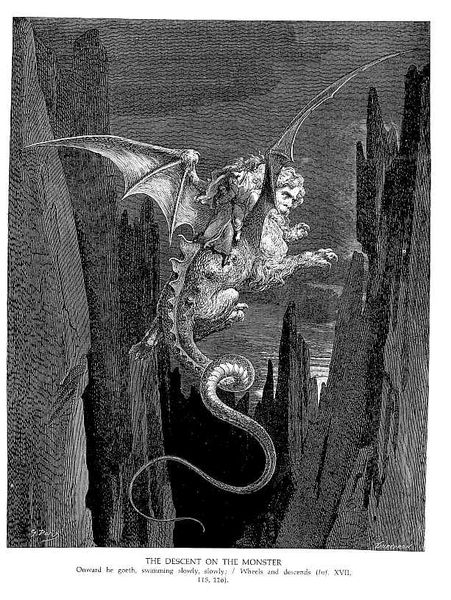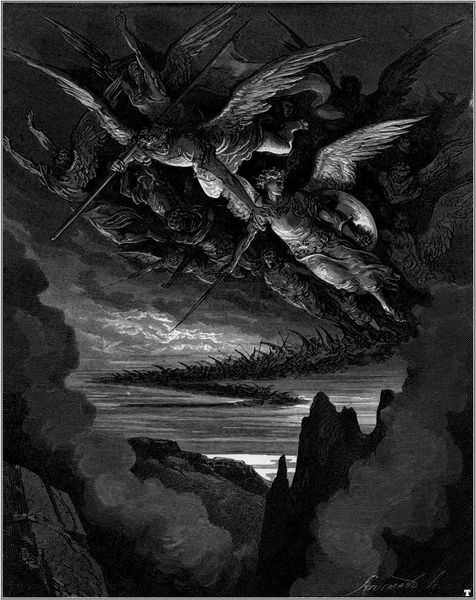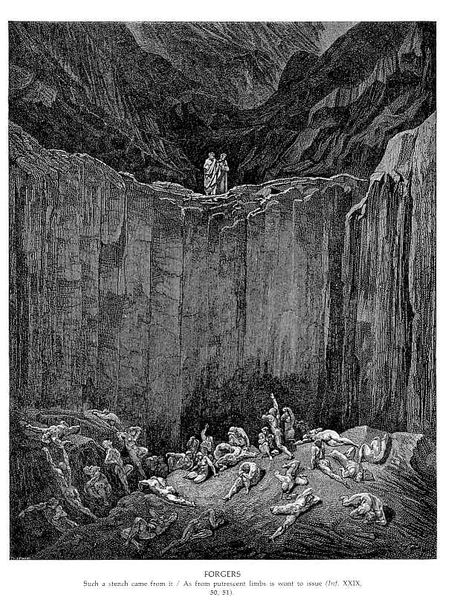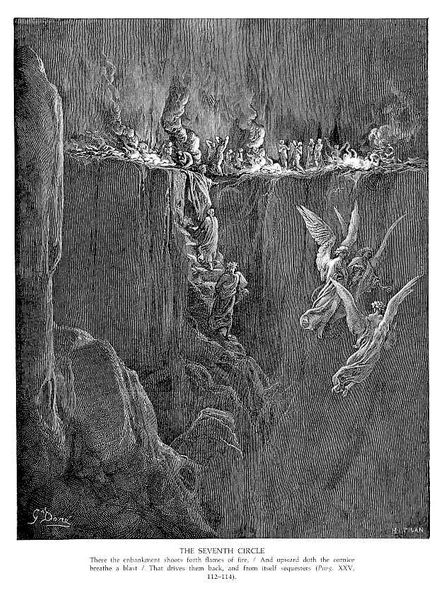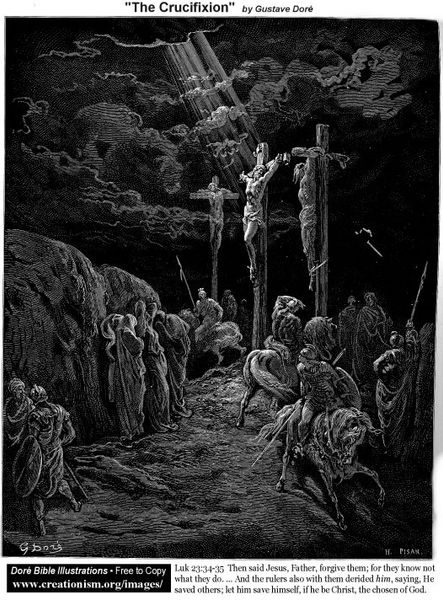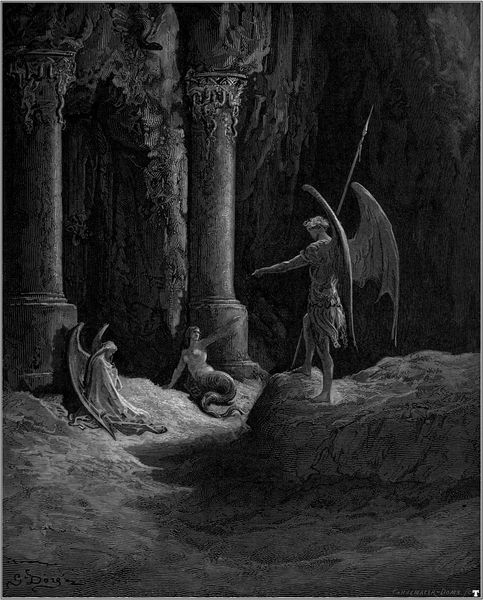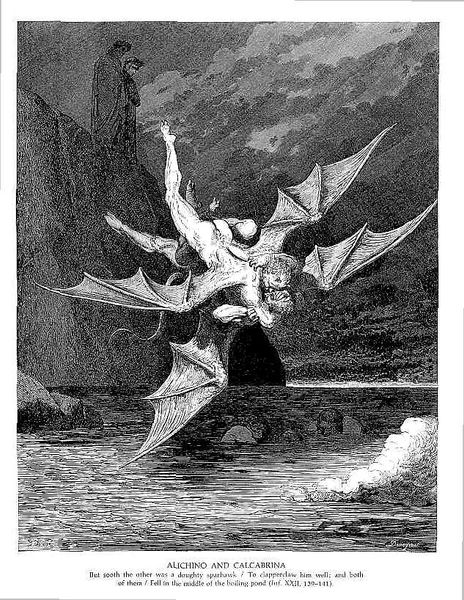
drawing, print, engraving
#
drawing
#
narrative-art
# print
#
landscape
#
figuration
#
romanticism
#
line
#
symbolism
#
engraving
#
monochrome
Copyright: Public domain
Curator: Here we have an engraving titled "Geryon—Symbol of Deceit" by Gustave Dore. It’s a scene that plunges us into a realm of the fantastic and the grotesque. What is your initial reaction? Editor: An unsettling dread. The contrast between the tiny figures at the top of the hill and the massive, looming creature below definitely emphasizes human vulnerability. It feels as though a terrible secret is about to be revealed, both literally and figuratively. Curator: It's part of Dore’s illustrations for Dante's "Inferno." Geryon, as you might guess from the title, embodies deceit, and this piece captures a crucial moment where Dante and Virgil descend into a lower circle of hell with Geryon's assistance. Editor: So Geryon becomes the vehicle for their descent into deeper circles of suffering. The monster’s physical form is quite remarkable. The almost comical, human-like face on a serpentine body contrasts so dramatically with the enormous bat-like wings; I imagine the artist intended to illustrate the twisted nature of dishonesty. The monster seems to possess a sense of both human reason and beastly impulse. Curator: Indeed. Dore uses dramatic light and shadow to create a sense of unease, really underlining the landscape's sinister nature. This speaks to the broader role of Romanticism, particularly its engagement with the sublime—a world so awful that it inspires simultaneous feelings of awe and terror in the spectator. Beyond just aesthetics, consider the social context. The rise of industrial capitalism and the growing awareness of social inequalities perhaps fed an artistic need to visually critique hidden corruption. Editor: The setting, this harsh, unforgiving landscape with smoke billowing in the background, contributes to that unease. This environment isn’t just a backdrop; it's integral to understanding Geryon. Are the two small men facing the winged dragon also embodiments of deceit, do you think? Curator: The figures, Dante and Virgil, look quite powerless, nearly at the dragon’s mercy. Virgil almost certainly represents reason, but the meaning of his pairing with Dante is much more complicated. Perhaps it shows how humankind may either conquer its demons, or is too late in this endeavor, about to succumb to them? Editor: Perhaps. Considering today’s global crises of truth and accountability, Dore’s work has as much sociopolitical resonance as when it was first created. Curator: Absolutely, looking at the role art has played in revealing and addressing abuses of power and influence remains critically relevant. Editor: A point well-taken, as always.
Comments
No comments
Be the first to comment and join the conversation on the ultimate creative platform.


